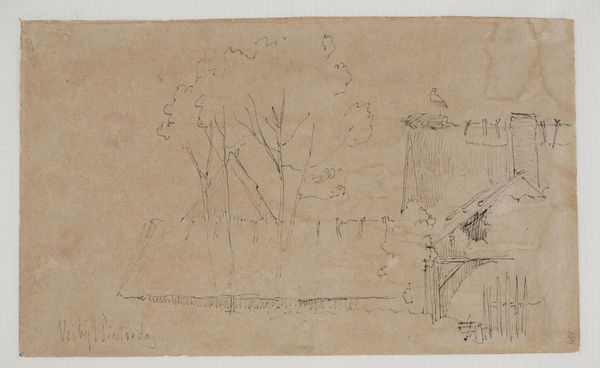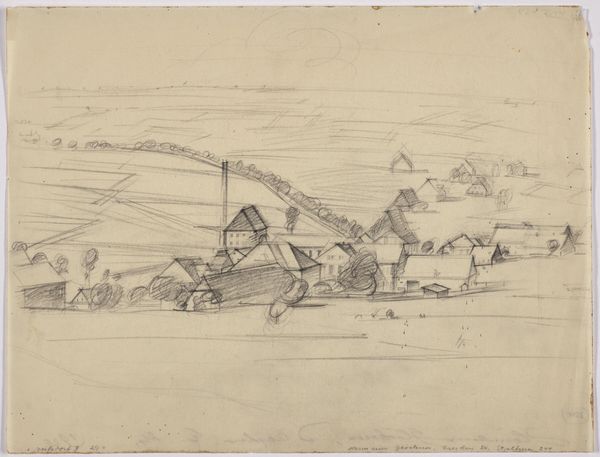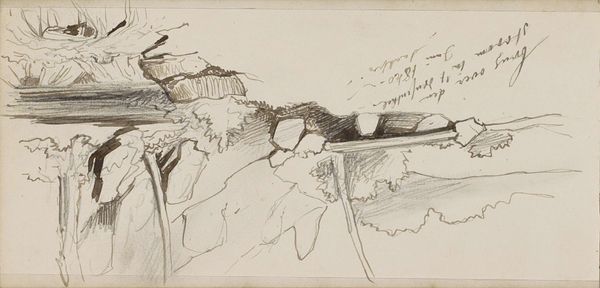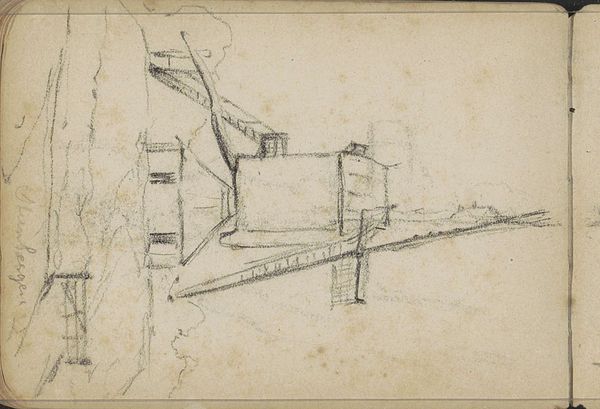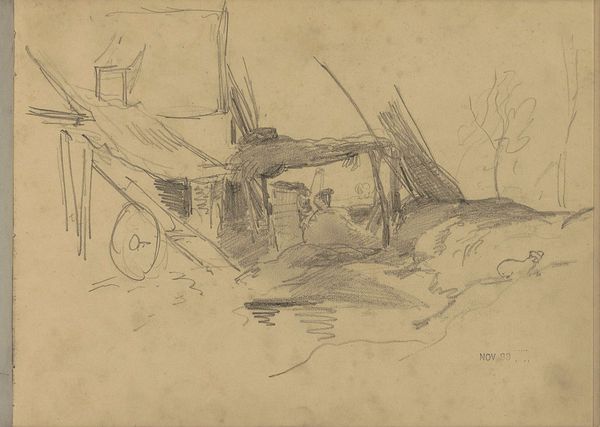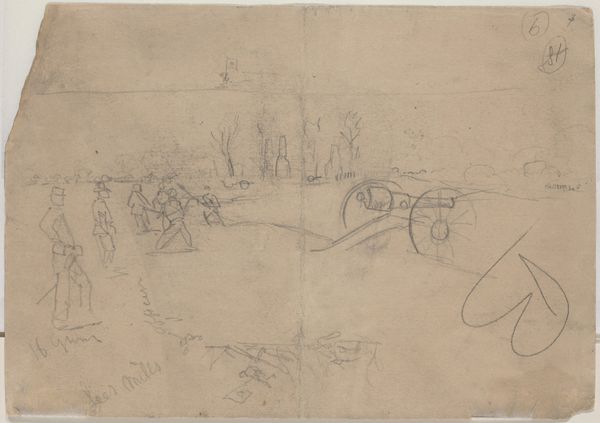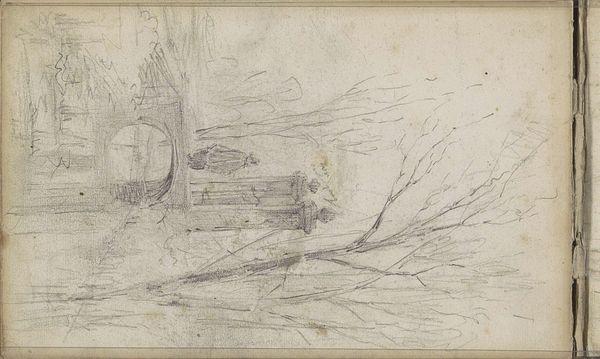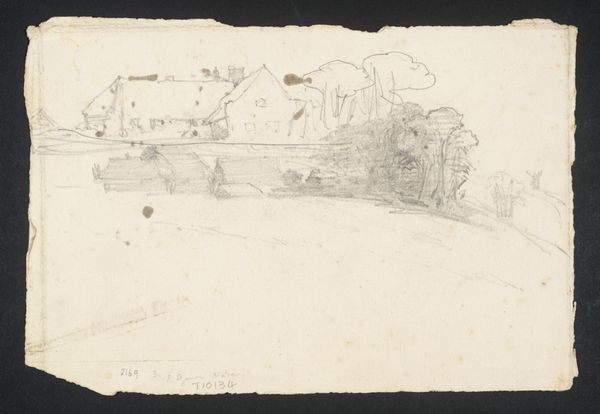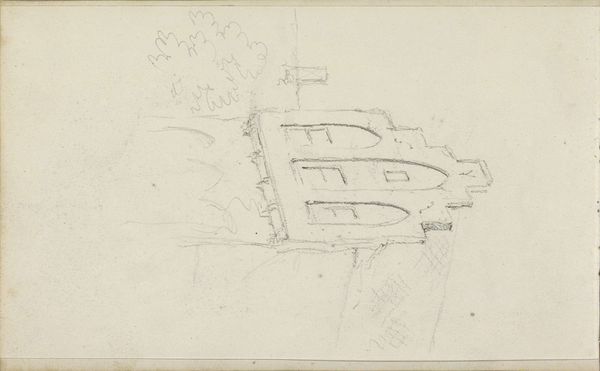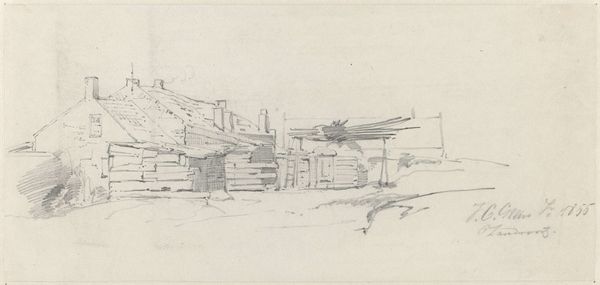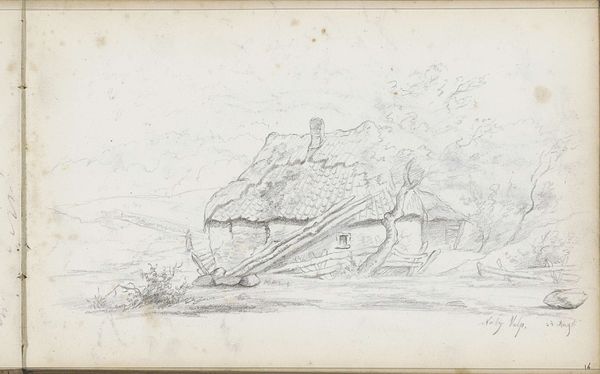
Copyright: Rijks Museum: Open Domain
This pencil drawing is by Willem Roelofs and captures a village street with a handcart near Bois Marteau. The handcart, a simple vehicle of labor, holds a prominent place, laden with unseen burdens and suggesting the weight of daily toil. The image of the handcart echoes across time, resonating with depictions of chariots of antiquity and the carts of nomadic peoples. Consider its appearance in works by Millet or Van Gogh, where similar carts evoke themes of rural hardship and resilience. The wheel, in particular, serves as a symbol of cyclical existence, perpetually turning and bearing the weight of human endeavor. The presence of the handcart also evokes a sense of melancholy, a memento mori suggesting the transience of life and the inevitability of decay. This feeling is connected with our collective memory and understanding of mortality. It is through this non-linear progression that the humble handcart evolves, resurfacing time and again, each time bearing new layers of meaning.
Comments
No comments
Be the first to comment and join the conversation on the ultimate creative platform.
